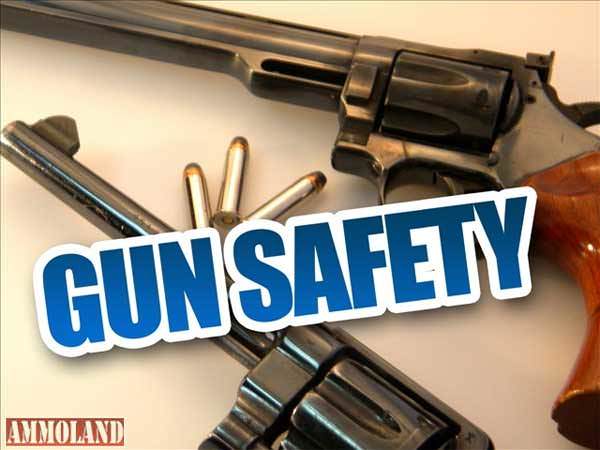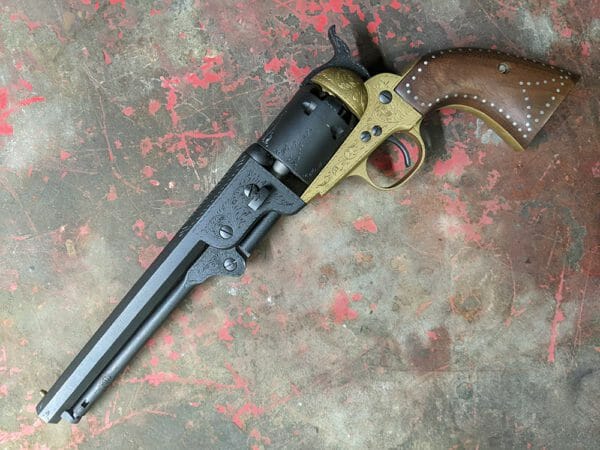
Tombstone, Arizona – As expected, my opinion on the Alec Baldwin manslaughter charges didn’t go over well with many of AmmoLand News’ regular readers, so let’s dig a little deeper and explore how I came to the opinions I hold.
Let’s start with what we actually know and what people think they know about the case.
The undisputed fact is that Alec Baldwin was rehearsing a scene in which he was to draw a single-action pistol from a shoulder holster and cock it as he pointed it in the direction of the camera. The director and the cinematographer were working with him to get him to do it exactly the way they wanted the camera to see it when the gun fired, and a bullet struck the cinematographer in the chest, passing through and striking the director in the shoulder. The cinematographer, Halyna Hutchins, died from her injuries. The director recovered.
Baldwin subsequently claimed that he did not pull the trigger, stating that he allowed his thumb to slip off of the cocked or partially cocked hammer, at which point the gun “went off.” He also talked about his extensive experience with firearms on movie sets, declaring that he would never intentionally point a gun at a person and pull the trigger… (As Bugs Bunny would say; “What a maroon.”)
Despite Baldwin’s claims to the contrary, we know that single-action pistols of the Colt SAA style do not “just go off” without the trigger being pressed unless the gun is either seriously broken or modified. The FBI subsequently confirmed that the gun Baldwin was holding was not modified or broken and could not have fired without him activating the trigger. We also know that Baldwin was knowingly pointing the gun in the direction of Hutchins and the Director – at their instruction.
We know that along with “starring” in the production, Baldwin also held a title as an “executive producer.”
Now let’s look at what we don’t know or only think we know.
In the movie industry, the title “executive producer” can mean anything from an honorary title given to major investors whose only contribution to the project is financial to the actual head honcho in charge of every aspect of the production. As is common among low-budget movies, the “Rust” production had several people listed as Executive Producers and also had several different production companies involved.
As a “big star” in some circle and apparently a driving force behind the production, Baldwin probably had a lot of sway within the production. Still, it has not been made clear exactly what his legal authority and liabilities might be regarding staffing and operation of the production. He has said that he had no role in hiring staff or dealing with day-to-day operations or logistics, and I’ve seen no clear evidence to the contrary.
In my original piece, I mentioned rumors of unsafe working conditions, after-hours live fire on the set, and negligent discharges of live ammunition during filming.
It is possible that prosecutors have substantiated some of those rumors, but I’ve seen no strong evidence that any of the more egregious claims are true. Most of it seems like the typical grousing of employees working in a relatively remote and uncomfortable situation. The fact that there were conflicts between the production company and film crew unions, with the production hiring non-union crew for some jobs, increases the likelihood of exaggerated complaints – and even possible sabotage. Baldwin’s personal reputation as an elitist anti-gun jerk who didn’t treat crew and fellow cast members with much respect could also play into the rumors. Once people are testifying under oath and we see more of the verifiable evidence, we’ll have a better idea of what was really going on during the filming and how much weight to give to the rumors.
Until then, I’m basing my analysis and opinion on the actual facts that I’ve been able to find, not rumors and unproven accusations.
A number of people took exception to my assertion that there are exceptions to “the Rules.”
I suggest those of you who claim to be absolutists on these matters must not have ever properly cleaned your firearms, never inspected a bore for fouling, or installed or removed a muzzle device or suppressor. You might want to avoid coming to Tombstone, where the Earps and Clantons shoot it out in the streets several times a day, 7 days a week.

Can you imagine seeing a western movie in which the actors hold their Peacemakers with their trigger fingers pointed straight along the frame rather than inside the trigger guard. If you saw that, you’d say it was ridiculous since that safety rule didn’t exist in the 1860s or even in the 1960s. The first movie I remember seeing with an actor following that rule was “Uncommon Valor” in 1983, thanks to the involvement of my friend Chuck Taylor as a technical consultant on that film.
The key to acceptable exceptions to “the Rules,” is the implementation of other strict safety protocols to ensure that there’s no possible way for an unintentional discharge to occur. Such rules are the only way that movies depicting firearm use can ever be made, short of rubber guns and computer-generated muzzle flashes. Those movie Firearms Photography & Video Creation Best Practice rules have been developed over long years of sometimes deadly experience, and they have been extremely effective. Even with all of the safety protocols in place, a lapse by anyone in the chain can result in tragedy, as happened on the set of “Rust.”
As I suggested in the original article, I believe that, had it been almost anyone other than Alec Baldwin who fired the fatal shot, they would not have been charged or blamed at all. In 1993, Brandon Lee, was killed on the set of the movie “The Crow.” An actor named Michael Massee fired the shot. Massee was not prosecuted, nor was he blamed in any way, because he was just an actor doing what he was supposed to do. His gun was loaded with blanks, and he was supposed to point it at Lee and pull the trigger. It turned out that the same gun had been used in a previous scene which included the use of “dummy rounds.” One of those rounds had a live primer that produced enough energy to lodge the bullet into the barrel, commonly referred to as a squib, but that wasn’t noticed or detected. When a full-power blank was fired from the same gun, the bullet that was lodged in the bore exited with deadly force, killing Lee.
As an actor and backstage crew in numerous local stage productions, I have been the person standing on stage being shot by a fellow actor at close range, and I’ve been the actor shooting at one of my friends. I’ve served as an armorer on several productions as well, sometimes supplying the guns and even loading my own blanks and dummy rounds. The fact that I was raised with and around guns was beneficial in all of that. I was extremely scrupulous about establishing and following safety protocols and making sure that everyone else did too. If I had ever handed a gun to an actor and found that he removed or replaced the blanks or dummies without my direct observation and participation, there would have been hell to pay because it would have been a violation of the safety protocols.
On the occasion that I was to be shot at close range, I insisted on being involved in the loading of the gun and the training of the actress who was to shoot me. It was not a comfortable situation, but as they say, the show must go on.
I’ll add that I began shooting when I was about five and was given my first .22 when I was 8. I’ve been shooting, reloading, and working on guns my whole life. In college, I made extra money by tuning single-action revolvers for Cowboy Action shooters, and I worked for years as a Small Arms Repairman for the Army, certified to work on everything from the M9 pistol to the MK19 grenade launcher machinegun. I’ve competed in almost every shooting sport, from Benchrest to Action Pistol to Skeet and Sporting Clays, and I’ve frequently served as a Range Safety Officer and similar positions.
With all of that, I stand by my opinion, as expressed in my previous article. Unless evidence comes out that proves that Alec Baldwin served as an on-site manager on the “Rust” set and that the rumors about firearm safety violations on the set are true and were known to him, I think his prosecution is nothing more than grandstanding by prosecutors and a social media lynch-mob. I dislike Baldwin and his politics, but I have seen no evidence that he did anything worthy of prosecution.
If you disagree, please include valid arguments and avoid casting aspersions on my character, expertise, or sanity.
And no, I haven’t been paid by the Baldwin camp to write this article.
About Jeff Knox:
Jeff Knox is a second-generation political activist and director of The Firearms Coalition. His father Neal Knox led many of the early gun rights battles for your right to keep and bear arms. Read Neal Knox – The Gun Rights War.
The Firearms Coalition is a loose-knit coalition of individual Second Amendment activists, clubs and civil rights organizations. Founded by Neal Knox in 1984, the organization provides support to grassroots activists in the form of education, analysis of current issues, and with a historical perspective of the gun rights movement. The Firearms Coalition has offices in Buckeye, Arizona, and Manassas, VA. Visit: www.FirearmsCoalition.org.
from https://ift.tt/sdLNp0v
via IFTTT

No comments:
Post a Comment